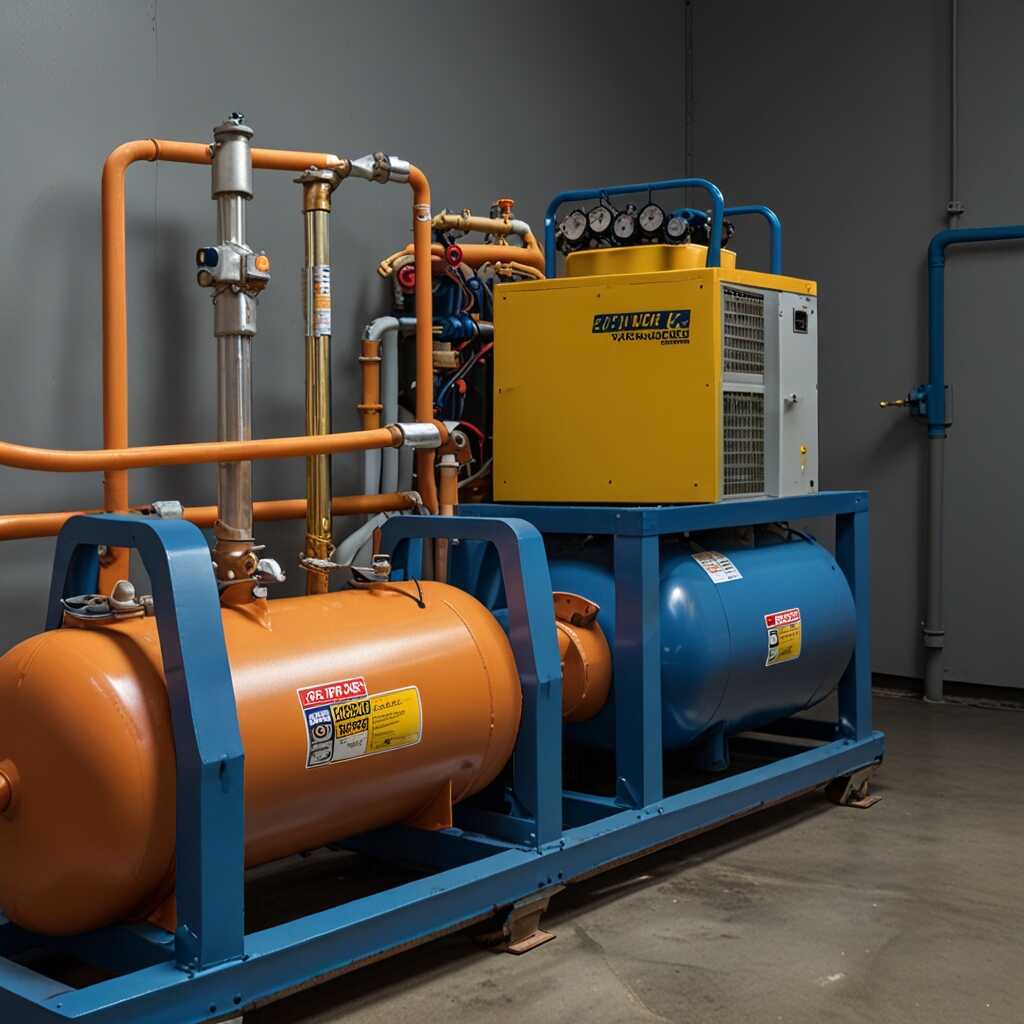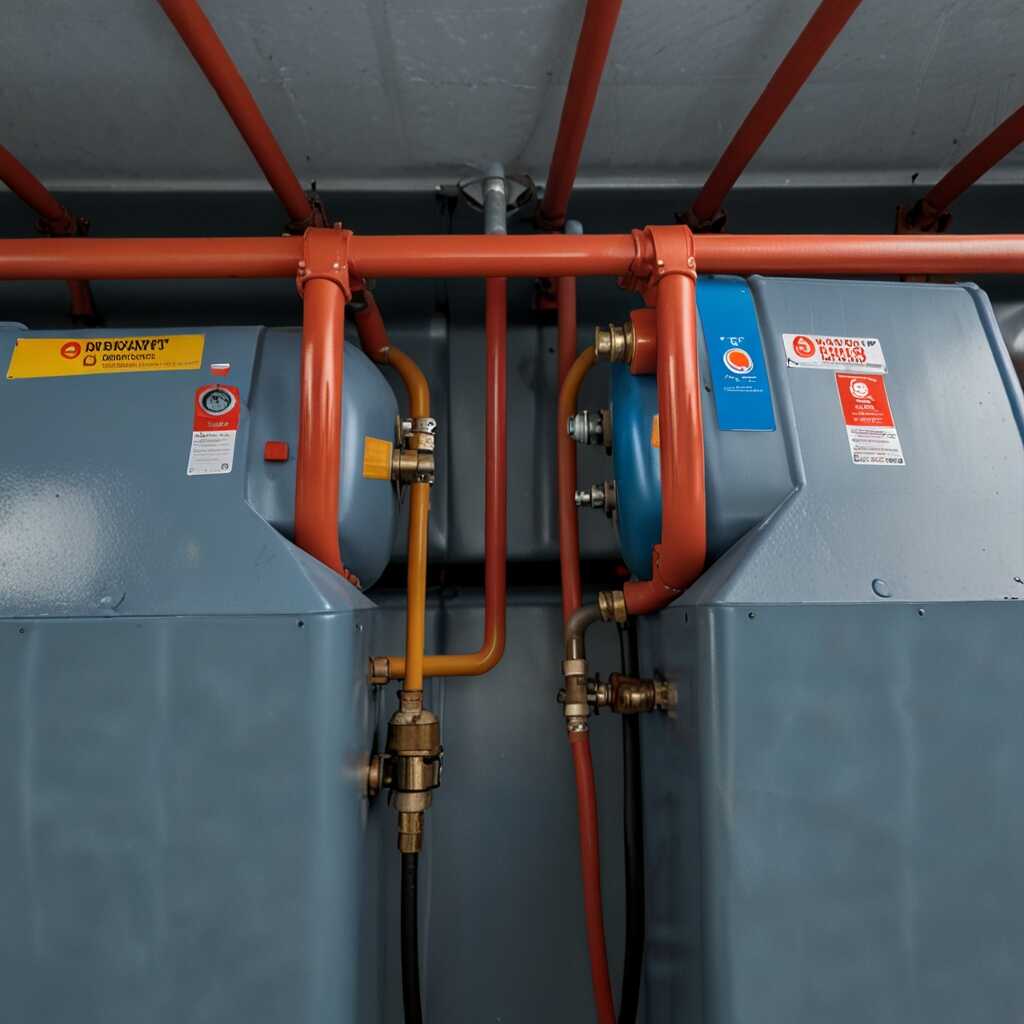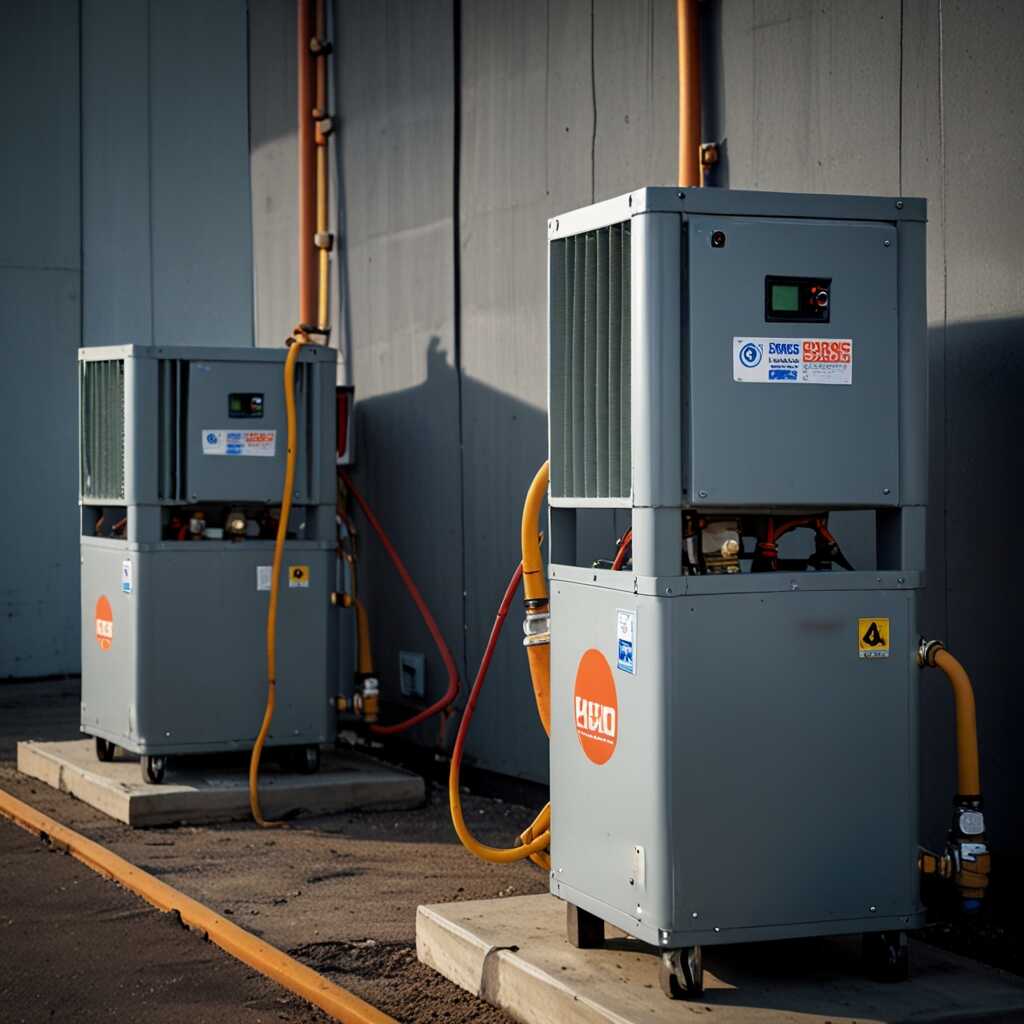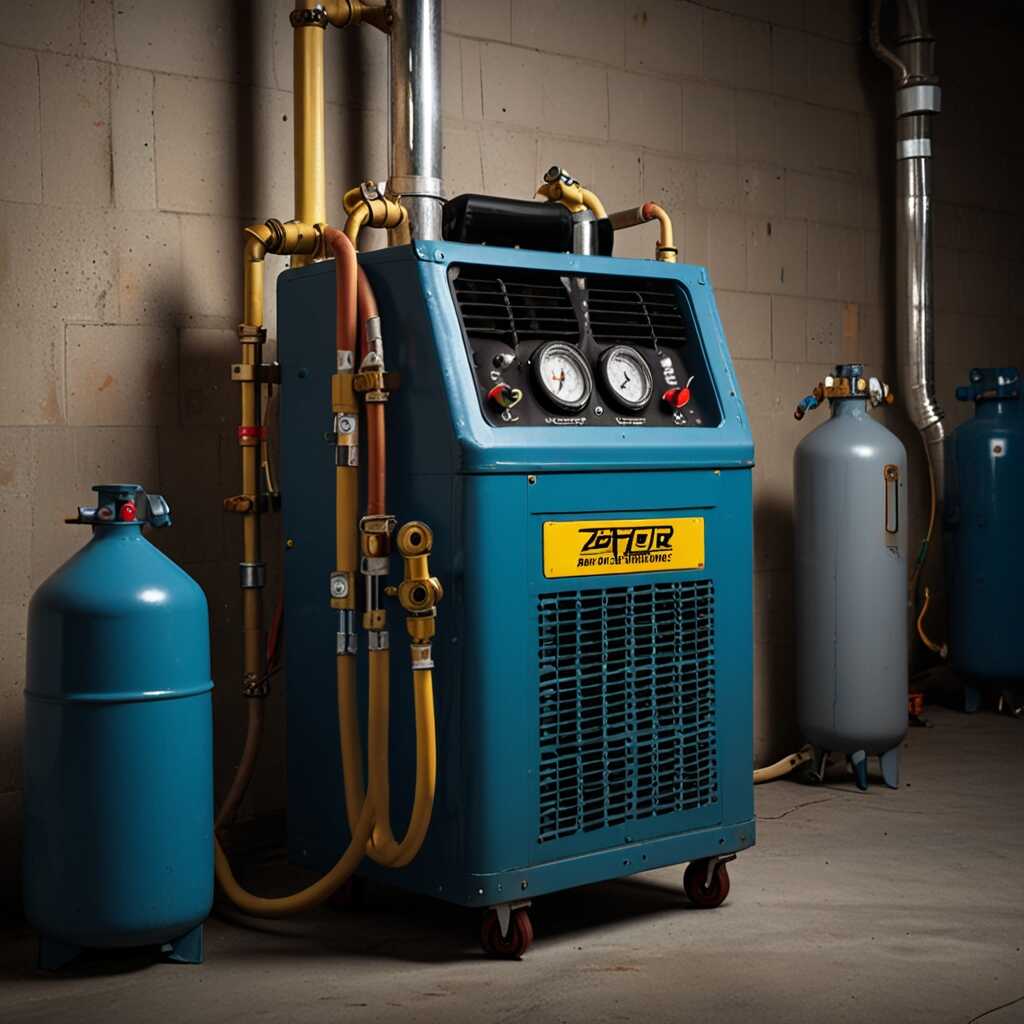Variable-speed refrigerant recovery machines excel at adapting to varying system pressures, enhancing the efficiency of recovery processes. These machines offer precise control, making them suitable for diverse HVAC applications. Refrigerant Recovery Pro provides HVAC professionals with expert insights about the functionalities and advantages of these machines. Understanding the benefits of variable-speed machines is crucial for compliance with industry regulations and effective refrigerant management.
The Mechanics of Variable-Speed Refrigerant Recovery Machines
Variable-speed refrigerant recovery machines operate using advanced technology that allows them to adapt to system pressures. These machines contain a variable-speed compressor that adjusts its speed based on pressure readings in the system. This allows for effective and efficient refrigerant recovery across various applications. The main components include a durable compressor, pressure sensors, and electronic controls. The adaptability feature is essential in ensuring reliability during different recovery scenarios. Testing and field experience have proven these machines significantly enhance recovery rates, providing HVAC professionals with a valuable tool for effective refrigerant management.
Understanding Pressure Adaptation in Refrigerant Recovery
Pressure adaptation is critical for maximizing refrigerant recovery efficiency. Variable-speed refrigerant recovery machines utilize intelligent algorithms that monitor system pressures in real-time. When pressure drops, the compressor slows down to reduce the chance of liquid slugging. Conversely, if the pressure rises, it can increase its speed to accommodate the higher load without compromising performance. This proactive approach helps maintain optimal performance and prevents potential system damage, ensuring HVAC technicians achieve the best results during their refrigerant recovery efforts. Regular testing and good reviews support their capability in handling various refrigerant types while enhancing overall HVAC performance.
Key Advantages of Variable-Speed Recovery Technology
Variable-speed refrigerant recovery machines provide several advantages for HVAC professionals. These machines enhance recovery efficiency by automatically adjusting to system pressures, ensuring optimal performance. This adaptability leads to a significant improvement in recovery times compared to traditional units. Studies show that recovery times can be reduced by up to 50% when using the latest technology. Moreover, variable-speed machines help lower operational costs by consuming less energy during recovery processes.
Comparative Performance of Variable-Speed Recovery Machines
When comparing variable-speed refrigerant recovery machines to traditional recovery units, variable-speed machines offer superior performance metrics. They are designed to adjust their speed based on the pressure of the system they are servicing. This results in enhanced recovery efficiency and faster cycle times. Variable-speed machines can handle both high and low pressures effectively, unlike traditional units that may struggle with varying conditions. The reliable performance of these machines is supported by EPA-certified testing and expert reviews, ensuring HVAC professionals can trust their results.

Typical Scenarios for Using Variable-Speed Refrigerant Recovery Machines
Variable-speed refrigerant recovery machines excel in various HVAC scenarios. They are widely used in residential split systems, commercial chillers, and heat pump applications. Technicians find these machines useful for their ability to adapt to different system pressures. This adaptability ensures efficient refrigerant recovery across diverse systems. For example, in a split system, the machine’s variable speed can enhance recovery rates without damaging sensitive components. In chillers, these machines can maintain the ideal pressure balance, yielding effective recovery while adhering to safety regulations. Their reliable performance improves overall efficiency in refrigerant management. Technicians leverage these capabilities for fast and safe refrigerant recovery.
Adapting to Pressure Variations in HVAC Applications
Variable-speed refrigerant recovery machines are designed to handle pressure variations effectively. They have sensors that continuously monitor system pressures. This feature allows the machines to automatically adjust their recovery speed for optimal performance. For instance, when dealing with R-410A refrigerant, a high-performance machine can achieve recovery rates of up to 300 pounds per hour. This adaptability is crucial for working with different HVAC systems. As such, choosing the right machine improves recovery efficiency, enhances reliability, and ultimately leads to successful compliance with industry regulations.
Key Statistics on Adaptive Refrigerant Recovery Equipment
- Variable-speed machines adjust flow rates based on system pressure changes.
- Studies show up to 30% faster recovery times compared to traditional machines.
- These machines can handle pressure variations from 0 to over 300 psi.
- Studies indicate that pressure modulation minimizes damage to refrigerants.
- Efficiency ratings often exceed 95% in optimal conditions.
- Advanced models can recover refrigerants at temperatures as low as -40°F.
- Variable-speed machines have shown to reduce energy consumption by 25%.

Potential Difficulties in Refrigerant Recovery Operations
Technicians may face several challenges when using variable-speed refrigerant recovery machines in fluctuating system pressures. These challenges include the machines’ responsiveness to pressure changes. Rapid fluctuations can lead to inefficient refrigerant recovery and increased risk of system over-pressurization. Additionally, technicians need to have experience in monitoring performance data to ensure reliability. A comparison between traditional and variable-speed machines may reveal improvements in efficiency, often exceeding 20% gains. Understanding these aspects helps technicians enhance their recovery strategies effectively.
Effects of Fluctuating System Pressures on Recovery Efficiency
Fluctuating system pressures significantly impact refrigerant recovery efficiency. Variable-speed machines are designed to adapt to pressure variations, improving recovery rates. When pressures drop, these machines can automatically adjust their speed to maintain optimal performance. This feature helps prevent issues such as liquid refrigerant carrying over, which can damage recovery equipment. By optimizing recovery, technicians benefit from impressive performance under varying conditions. Research shows that variable-speed machines can achieve recovery rates that traditional models may not match under unstable conditions.

Understanding Regulatory Standards in Refrigerant Recovery
HVAC professionals must understand key regulatory standards impacting refrigerant recovery practices. Primary regulations include the Environmental Protection Agency (EPA) guidelines, which mandate proper recovery methods to reduce emissions. Compliance with these regulations helps avoid penalties and ensures responsible refrigerant management. The regulations are designed to enhance recovery efficiency and protect the environment by establishing standards for leak detection and refrigerant handling. Regulatory bodies that oversee compliance include the EPA in the United States and similar entities in other countries, each providing essential guidelines for best practices. By 2025, the maximum allowable refrigerant leakage percentage during recovery is set to be 15%, making it crucial to stay informed on these guidelines.
Essential Features of Compliance with EPA Regulations
Complying with EPA regulations involves several essential features to ensure reliable refrigerant recovery. The guidelines specify testing and verification of recovery equipment and enforce strict leak detection requirements. HVAC professionals must utilize certified equipment designed for effectiveness, ensuring it can handle various refrigerants efficiently. Regular reviews of operational procedures help maintain compliance, improve performance, and enhance overall reliability. Consider training programs that offer expert insights into the latest compliance standards and the best practices to incorporate into your daily operations. Staying updated on these regulations delivers not only legal safety but also reinforces environmental responsibility in the HVAC industry.
Advantages of Dynamic Refrigerant Recovery Techniques
- Improved safety with automatic pressure adjustments during operation.
- Variable-speed machines allow technicians to recover refrigerants efficiently.
- These machines save time during the recovery process, enhancing productivity.
- Techs appreciate reduced wear and tear on both machines and systems.
- Enhanced portability makes them easy to use across various job sites.
- Users benefit from quieter operation compared to traditional recovery machines.
- Regulatory compliance becomes easier with improved recovery methods.

Optimal Practices for Operating Variable-Speed Recovery Machines
To effectively use variable-speed refrigerant recovery machines, HVAC professionals should focus on maintaining the machine’s reliability through regular testing and calibration. Users must ensure the machine is compatible with the refrigerant type and system pressures to optimize performance. Evaluating machine features and conducting reviews help in making informed decisions about which machines can handle specific requirements. Following best practices, such as keeping the machine clean and adhering to maintenance schedules, enhances the reliability and efficiency of the unit. Familiarizing oneself with necessary regulatory compliance tips ensures safe operation and adherence to environmental standards.
Improving Refrigerant Recovery Efficiency
Enhancing refrigerant recovery efficiency involves understanding the capabilities of variable-speed machines. These machines can adjust their operation dynamically based on the system pressures, which can improve recovery rates significantly. For efficient operation, ensure that the right recovery speed is set according to the refrigerant being used. Many variable-speed recovery machines are designed to recover refrigerants quickly, often achieving over 30% greater recovery rates compared to fixed-speed models. Using these machines effectively provides HVAC professionals with impressive results while operating within regulatory requirements and maximizing environmental safety.
Emerging Trends in Refrigerant Recovery Technology
Variable-speed refrigerant recovery machines are leading the charge in refrigerant recovery technology, improving performance and reliability. Recent advancements focus on automation and smart technology integration. These developments enhance the machines’ ability to adapt to varying system pressures, boosting overall efficiency. New features such as real-time monitoring enable technicians to ensure optimal operation during refrigerant recovery processes. Emerging technologies integrate better safety mechanisms for handling refrigerants, which reduces risk and improves compliance with regulations.
Impact of Smart Technology on Recovery Processes
Smart technologies significantly improve refrigerant recovery efficiency and reliability. These technologies enable real-time data collection and analysis, which helps technicians monitor system performance. By utilizing predictive analytics, HVAC professionals can identify potential issues before they affect recovery processes. Smart systems can be easily managed from mobile devices, providing comfort and control. Enhanced communication among equipment leads to optimized recovery cycles, making these machines an excellent choice for technicians aiming for superior performance.
Relevant Use Cases and Demographics for Refrigerant Recovery Solutions
- HVAC technicians focus on reducing recovery times and improving efficiency.
- Commercial service providers benefit from handling larger systems easily.
- Field engineers appreciate the versatility in different refrigerant types.
- Contractors working with variable-speed models reduce operational downtime.
- Refrigerant recovery specialists require machines that adapt to various pressures.
- Industrial facilities often need equipment that maximizes energy savings.
- Regulatory compliance experts value machines that meet new refrigerant mandates.
Further Resources and Support for HVAC Professionals
HVAC professionals seeking to enhance their knowledge of refrigerant recovery methods can rely on various key resources. Websites like EPA’s official site offer essential regulatory guidance. Technical support from Refrigerant Recovery Pro helps with troubleshooting and reviews of recovery equipment. Industry organizations, like AHRI and ASMEE, provide insights into best practices and testing standards. Various forums and peer-reviewed journals also offer updated data and performance results of recovery machines. Joining industry webinars can helps professionals stay updated on advancements and compliance changes.
Essential Tips for Maximizing Refrigerant Recovery Success
To maximize refrigerant recovery success, HVAC technicians should be aware of certain best practices. Properly testing and maintaining equipment is crucial. Make sure to regularly review machine performance and reliability. Data from 2025 refrigerant regulations highlight the importance of efficient recovery techniques. Scheduling periodic training sessions enhances technicians’ skills. Using recognized industry standards enables reliable practices. Technicians should also consider equipment designed for easy transport and durability, enabling more efficient recovery operations.